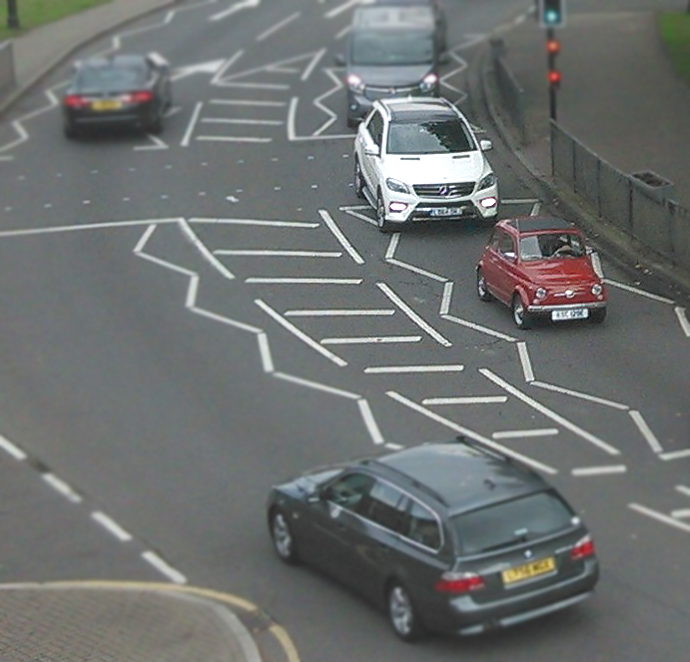
The way carmakers market to us has changed over time. If you can remember a time before the near-demise of the estate car, it was all about 0-60 times. Now ads sell the SUV lifestyle.
There’s no doubt motorists enjoy the elevated driving position offered by SUVs, but do these larger vehicles offer occupants any more room? It’s a tough question to answer because carmakers don’t brag about interior space; boot space at a push, but rarely, if ever, the overall interior volume.
Perhaps it’s because other things are more important. The 2019 Subaru Ascent launched to the American market as the largest car the firm had ever made, but made the news for an altogether different reason. The SUV boasts 19 cup holders.
We’re not downplaying down the benefits of cup holders (although 19 seems excessive), nor overstating the importance of interior space. For example, one of the most cramped cars of recent years would arguably prove the most practical for many urban dwellers.
The Citroen Ami is tiny. As the world’s cities wake up to the pollution, road danger and congestion caused by cars, its designers started from first principles; 25 per cent of car trips are under 1 mile, and 71% under 5 miles; most of which with only one or two people onboard. The result is a car as practical as a washing machine, but not very – as marketing people might say – aspirational. Most will dismiss the Ami out of hand. Perhaps it’s too radical a departure from the status quo.

The Citroen Ami is slow and light – perfect for the way most of us use our cars
It’s unfortunate because the quirky little electric vehicle costs around £20 per month to own (based on £2,600 deposit).
The Ami is like a four-wheeled e-scooter – perhaps it’s ahead of its time. While it wouldn’t work for everyone, it should at the very least encourage us to question why we choose the cars we do.
Horses for courses
What mode of transport would you choose for a trip to the local shops? The commute to work? A holiday in France? An expedition to Senegal?
The appetite for large 4×4s and SUVs appears to be as keen as ever. However, while these cars are sold on a promise of adventure, how often do they venture away from tarmac; and who said a two-tonne car makes the best adventure vehicle anyway?
| ‘The perception that cars, or even bicycles, need to be heavy to tackle off-road terrain is a triumph of marketing over reality’
In 1980, the Range Rover was still considered a work vehicle, equipped as it was with pressed-steel wheels and vinyl seats designed to be washed down with a hose. It had yet to become the £80,000+ luxury vehicle it is today.
At a time when the Range Rover was still more tractor than limousine, people appeared more flexible in what they considered a potential off-road vehicle. In the same year, two riders completed the gruelling Paris Dakar Rally having ridden their Vespa scooters across 7 countries and 10,000 km of brutal terrain. The perception that cars, motorcycles or even bicycles need to be big and heavy to tackle off-road terrain is a triumph of marketing over reality.
Going back further still, designers at Citroen after the war were asked to produce a low-cost, reliable and economical off-roader. The brief required that the car deliver 78 mpg and be capable of carrying four farm workers across a muddy field carrying 50 kg of luggage and a tray of fresh eggs; which were not to break. So was born the 2CV, a car so successful it remained in production for 42 years.

In 1958, two young Frenchmen left Paris in a 2CV and headed south to traverse the African continent before crossing America, and finally returning home via Yokohama. They used a little over 1,000 gallons of fuel and 9 sets of tyres to complete the 100,000-kilometre trip.
Making rational choices about how and when to travel is vital if we’re to safeguard the environment. But even when image (if not interior space) is a factor, when you’re next confronted by ads for the latest SUVs, consider for a moment the vehicles that truly define the spirit of adventure; the plucky Vespas that conquered the Paris Dakar, the continent-conquering Citroen 2CV or the arctic cycling pioneers of the 1890s who thought nothing of setting off across the Canadian arctic on a bog-standard bicycle.
Ethical car breakdown cover
The ETA was established in 1990 as an ethical provider of green, reliable travel services. Over 30 years on, we continue to offer cycle insurance , breakdown cover and mobility scooter insurance while putting concern for the environment at the heart of all we do.
The Good Shopping Guide judges us to be the UK’s most ethical provider.

0 Comments View now